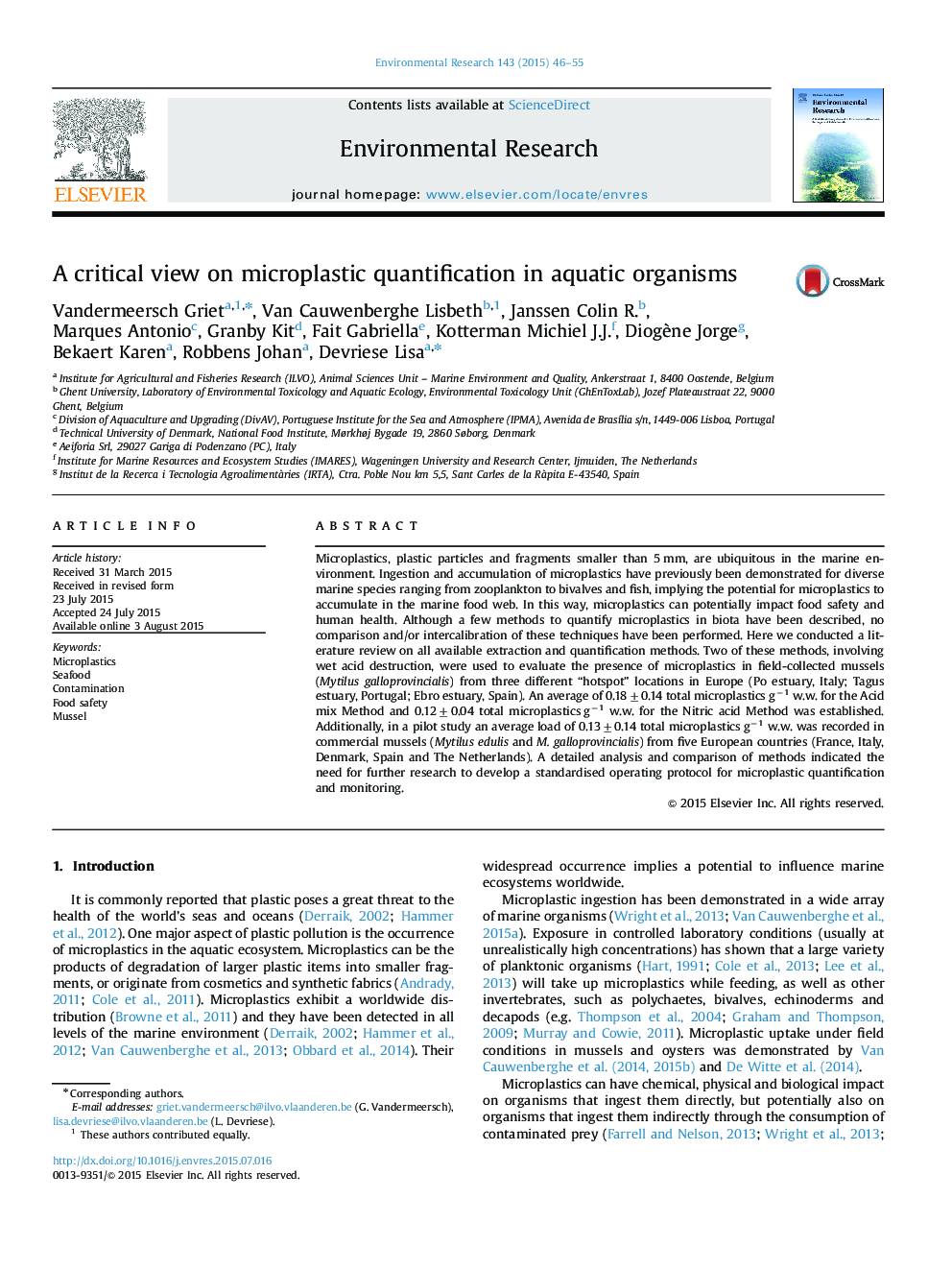| Article ID | Journal | Published Year | Pages | File Type |
|---|---|---|---|---|
| 4469682 | Environmental Research | 2015 | 10 Pages |
Microplastics, plastic particles and fragments smaller than 5 mm, are ubiquitous in the marine environment. Ingestion and accumulation of microplastics have previously been demonstrated for diverse marine species ranging from zooplankton to bivalves and fish, implying the potential for microplastics to accumulate in the marine food web. In this way, microplastics can potentially impact food safety and human health. Although a few methods to quantify microplastics in biota have been described, no comparison and/or intercalibration of these techniques have been performed. Here we conducted a literature review on all available extraction and quantification methods. Two of these methods, involving wet acid destruction, were used to evaluate the presence of microplastics in field-collected mussels (Mytilus galloprovincialis) from three different “hotspot” locations in Europe (Po estuary, Italy; Tagus estuary, Portugal; Ebro estuary, Spain). An average of 0.18±0.14 total microplastics g−1 w.w. for the Acid mix Method and 0.12±0.04 total microplastics g−1 w.w. for the Nitric acid Method was established. Additionally, in a pilot study an average load of 0.13±0.14 total microplastics g−1 w.w. was recorded in commercial mussels (Mytilus edulis and M. galloprovincialis) from five European countries (France, Italy, Denmark, Spain and The Netherlands). A detailed analysis and comparison of methods indicated the need for further research to develop a standardised operating protocol for microplastic quantification and monitoring.
